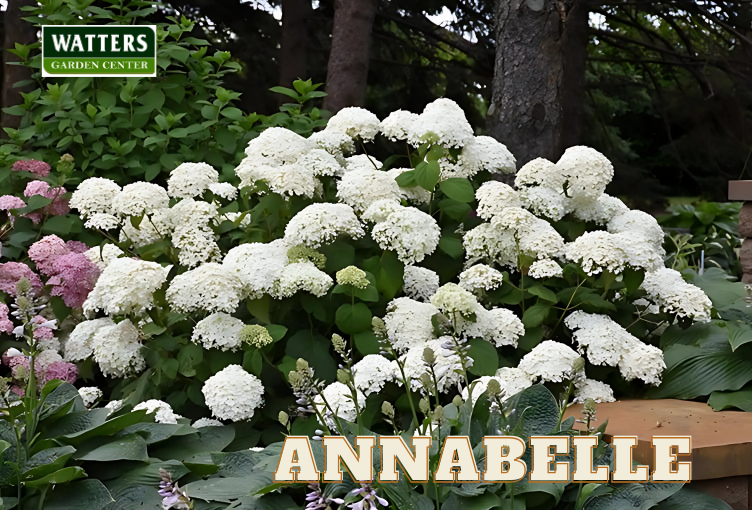Tips for Growing These Showstoppers in the Garden
by Lisa Watters-Lain, Arizona’s Garden Gal
Gorgeous hydrangeas! These showstoppers bring a burst of color to any garden. From classic Bigleaf to the climbing Miranda, there’s a hydrangea for every space. Bigleaf hydrangeas change color with your soil’s pH–blue in acidic soil and pink in alkaline. Climbing hydrangeas add vertical interest, while Oakleaf dazzles with its fall foliage. Peegee hydrangeas can even be trained into trees! Smooth hydrangeas like Annabelle are known for their massive blooms. Remember, pruning depends on whether they bloom on old or new wood. Hydrangeas thrive in well-drained soil with plenty of compost, preferring bright shade in our Arizona climate.
Six Popular Types of Hydrangea & How to Grow Them
Bigleaf Hydrangeas, like Nikko Blue are garden classics. Their large, eight-inch serrated leaves and rounded blooms make a statement. Nikko Blue offers those classic mophead flowers, changing color with your soil’s pH. Acidic soil? Expect beautiful blue blooms. Alkaline? They’ll be a vibrant pink. For something a bit different, try Pink Elf. It’s smaller, perfect for containers or borders, and boasts those eye-catching, rosy mophead flowers. Remember, Bigleaf hydrangeas bloom on old wood, so prune them right after they finish flowering to ensure a spectacular show next year.
Climbing hydrangeas. Hydrangea anomala is a climber with charm. Its vigorous vines boast fragrant white flowers in spring and early summer, creating a beautiful display. Miranda stands out with its variegated foliage–dark green edged in creamy white–and fragrant blooms. It clings readily to surfaces, adding vertical interest to walls or fences. An added bonus? Once mature, Miranda reveals exfoliating reddish bark, providing winter appeal. Remember, these climbers bloom on old wood, so prune them after the flowers fade. They can even be used as a unique ground cover in shady spots.
Mountain hydrangeas, Hydrangea serrata, are perfect for smaller gardens. They’re a compact version of the popular Bigleaf, offering delicate lace cap flowers that change color with your soil’s pH. Seaside Serenade is beautiful, its strong stems holding up stunning lace caps. The serrated leaves add interest, turning reddish-burgundy as they age. For continuous color, try Tuff Stuff. This reblooming variety puts on a show from early summer until frost, its double florets transitioning from creamy white to a vibrant pink. Mountain hydrangeas bloom on old wood, and their compact size means pruning is rarely needed. If you do prune, do so right after flowering.
Oakleaf hydrangeas bring unique beauty to the garden. Their leaves, shaped like oak tree foliage, offer year-round interest, turning a brilliant mahogany in fall. Ruby Slippers is a showstopper; its substantial white blooms aging into deep pink. Those full flowers stand tall, even after our monsoon rains. For a classic look, Snow Queen boasts enormous white blooms that develop a rosy-pink hue as the leaves transition to a deep red-bronze. Oakleaf hydrangeas bloom on old wood, so prune them immediately after they flower.
Peegee hydrangeas, Hydrangea paniculata, are known for their large, cone-shaped flower panicles that transition from white or green to a lovely pink. If you’re looking for a statement piece, the classic Peegee can be trained into a small tree, showcasing 18-inch blooms from mid to late summer. For smaller spaces, Bobo is a delightful dwarf variety, only reaching about three feet tall. It’s covered in white flowers that gradually turn pink, creating a charming display. Peegee hydrangeas bloom on new wood, so prune them in late winter or early spring.
Smooth hydrangeas, Hydrangea arborescens, are a garden favorite, and Annabelle is perhaps the most recognizable. Its vast, snowball-shaped flowers appear in spring and early summer, creating a stunning display. For a pop of pink, try Invincibelle Spirit. It boasts bright pink snowball blooms from early summer to the first frost, with flowers transitioning from hot pink to a softer shade, then finally to green. White Serenade is an excellent choice for smaller gardens. Its snowball flowers appear throughout the summer, held upright by sturdy stems, even in heavy rain. These make superb-cut flowers and are ideal for borders or containers. Smooth hydrangeas flower on new wood, so prune them in late winter or early spring.
Until next week, I’ll be helping homeowners choose the prettiest Hydrangeas for their gardens.
Lisa Watters-Lain can be found at Watters Garden Center throughout the week, 1815 Iron Springs Road in Prescott, or contacted through her website at WattersGardenCenter.com or Top10Shrubs.com.

